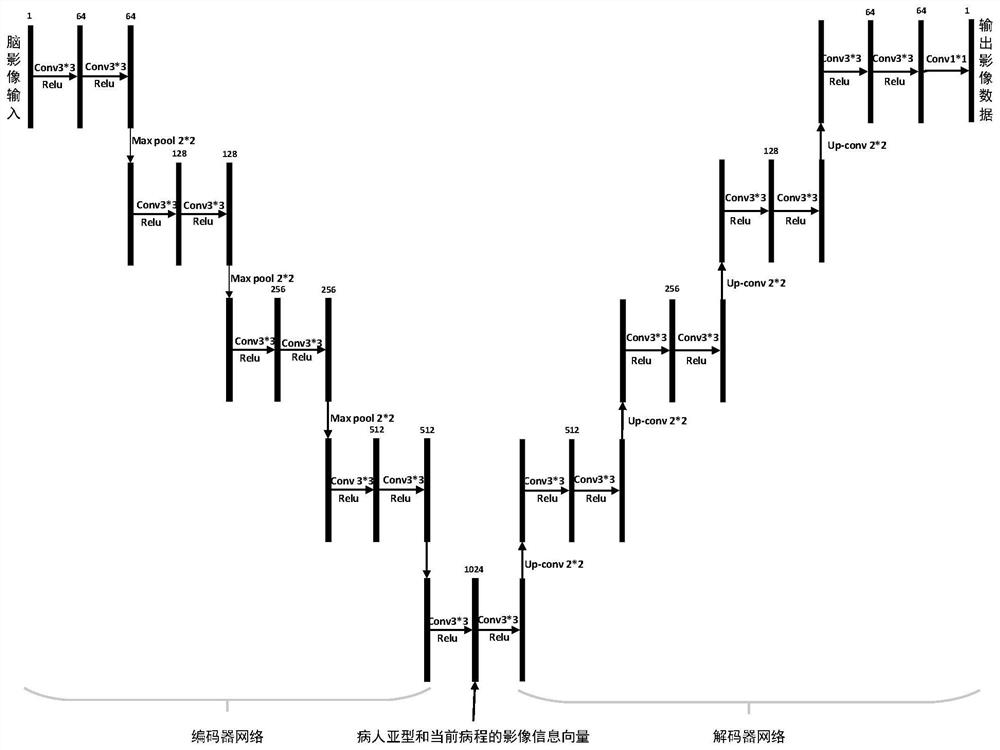Neurodegenerative disease brain image generation prediction method based on depth generation model
A neurodegenerative and generative model technology, applied in image enhancement, image analysis, image data processing, etc., can solve problems such as the inability to predict the natural course of the disease, and achieve the effect of improving the efficiency of disease diagnosis and treatment
- Summary
- Abstract
- Description
- Claims
- Application Information
AI Technical Summary
Problems solved by technology
Method used
Image
Examples
Embodiment 1
[0038] Such as image 3 As shown, the embodiment of the present invention discloses a method for generating and predicting brain images of neurodegenerative diseases based on deep generative models. data as an example;
[0039] Such as figure 1 As shown, the overall process includes the following steps:
[0040]Step 1. Obtain the patient's brain structure imaging data, and divide the patient into subtypes and evaluate the course of the disease according to the common clinical subtype classification method of Parkinson's disease and the Hoehn&Yahr scoring method, so as to evaluate the patient's brain structure image data. Divide and organize, and add subtype and course labels for each brain structure image data; specifically, in this embodiment, the brain structure image data of the patient is obtained based on the brain MRI scan, and the MRI scan uses GE SignaHDxt 3.0T MRI , the scanning content is a high-resolution T1-weighted brain structure image (HR-TIW1), which is used...
PUM
 Login to View More
Login to View More Abstract
Description
Claims
Application Information
 Login to View More
Login to View More - R&D
- Intellectual Property
- Life Sciences
- Materials
- Tech Scout
- Unparalleled Data Quality
- Higher Quality Content
- 60% Fewer Hallucinations
Browse by: Latest US Patents, China's latest patents, Technical Efficacy Thesaurus, Application Domain, Technology Topic, Popular Technical Reports.
© 2025 PatSnap. All rights reserved.Legal|Privacy policy|Modern Slavery Act Transparency Statement|Sitemap|About US| Contact US: help@patsnap.com



